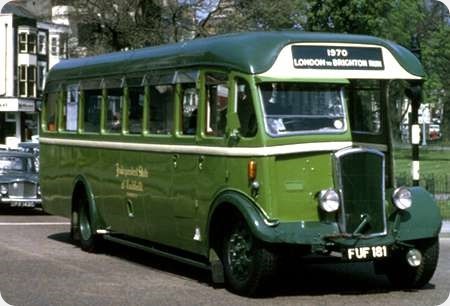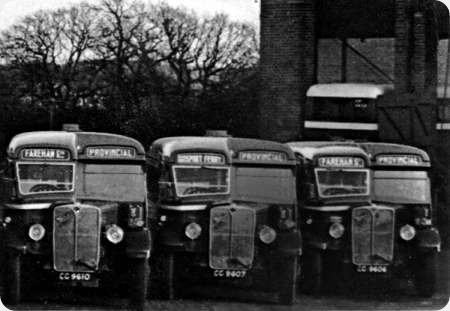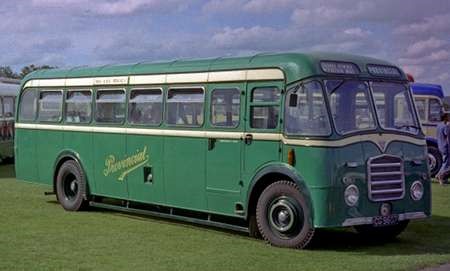Southdown – Dennis Falcon – FUF 181 – 181
Southdown Motor Services
1939
Dennis Falcon P4
Harrington B30C
In 1938, Dennis replaced its multiplicity of of small buses for lightly trafficked routes – Dart, Pike, Arrow Minor, Ace and Mace – with one model, the Falcon. This was offered with normal or forward control, the engine options being Dennis 3.77 side valve petrol, or Gardner 4LK or Perkins P6 diesel. In 1938 Southdown took over the Worthing Tramocar business and began replacing the original Shelvoke and Drewry Freighters, at first with new Freighters. More about the Tramocar business may be found on OBP here:- //www.old-bus-photos.co.uk/?p=19218
In April/May 1939 Southdown moved towards conventional buses for the Tramocar services, and purchased FUF 180/1, fleet nos. 80/1, two forward control Dennis Falcon P4s with Harrington B30C bodies offering easy access to the elderly clientele of Worthing. A third similar chassis, JUF 82, no. 82, but with Dennis B30R bodywork, arrived later that year in December after war had broken out, by which time only about 50 Falcons in total had been been produced by Dennis. In 1949 Southdown again turned to the lightweight Falcon P4, buying a further nine with Dennis B30R bodies, JUF 83-91 with matching fleet nos., for its service between Havant and Hayling Island which crossed a frail, elderly wooden bridge over the Langstone Channel built in 1824, on which a toll applied. Even then the bus went over tentatively and unladen, the passengers having to alight and walk across to rejoin it on the far side. The two ex Tramocar Falcons were transferred to the Hayling Island service to complement the ten later arrivals. The Langstone Bridge was replaced by a new structure in 1956, but the crossing toll remained until 1960. None of the Dennis bodied Falcons seems to have survived, but Harrington bodied FUF 181 of 1939 was once extant on the preservation scene. It is seen above at Brighton on the HCVC Rally in May 1970. Currently it is recorded as undergoing further restorative work. The prominent starting handles on all the Southdown Falcons suggests that they were powered by the robust 3.77 litre side valve petrol engine rather than the Gardner 4LK, but confirmation would be welcome.
Photograph and Copy contributed by Roger Cox
13/11/21 – 06:24
Hello Roger, I have just checked in Colin Druce’s excellent book ‘Southdown in Austerity’, and he confirms that these buses were indeed fitted with the Dennis 3.77 litre side valve petrol engine.
Roy Nicholson
01/03/22 – 06:47
I read with interest the notes on the captioned. I had been looking for any information regarding its present state, to date, to no avail. However despite my not being fully computer literate I managed to get the following, it is/was with Seaford & District who I understand have been taken over by 7 Sisters Bus & Coach whatever they might be in 01-2021. On the Seaford web site under Vintage Bus there is a Flickr Photopool, under Group Pool, Paul Goldsmith there is a shot of said bus, headed DCS_0105, dated 08/2017. It looks to be a VERY comprehensive works in progress, to say the least!. I should add that I have several times in the past sent E-mails to S&D regarding this vehicle but on no occasion did I get any reply, customer service?.
John Adrian Pearce
Quick links to the - Comments Page - Contact Page - Home Page





